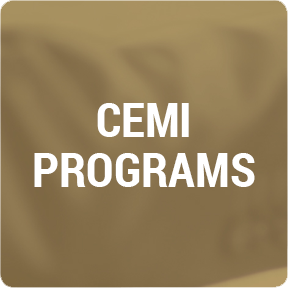THE ISSUE
To develop a new air cooling technology for underground mining that will decrease the overall carbon footprint and reduce operating costs, especially as mines deepen and their cooling loads increase.
THE SOLUTION
CEMI is working with MIRARCO to design a system that uses the shaft work from a wind turbine rotor to drive the compressor in an air liquefaction plant. The motivation is that if utilizing wind energy to drive the liquefaction process is practical, work from such a wind turbine would be available at very low marginal cost and with very low CO2, eq emissions – in contrast to liquefaction by means of grid electricity powered liquefaction plants. The research will include determination of the feasibility of using wind powered liquefaction plants to produce liquid air used to cool underground workings (as deep as 2-3 kilometres) and compare this approach with that of conventional mine cooling practice.
INNOVATION IN PROGRESS
Wind turbines and liquefaction plants are established, commercial technologies. It is the integration of these two technologies where innovation arises. An important distinction between conventional liquefaction approaches and the CryoVent approach is the variability and intermittency of wind energy resources that dictate the rate of work input delivered by a wind turbine, versus the steady input delivered by an electric motor.

If at standard pressure and temperature the amount of liquid air in the Dewar flask would occupy around 1 m3
Can a CryoVent wind turbine system be designed to accommodate the intermittent and variable work input and still produce a relatively steady output rate of cryogen? Development of a numerical model of the liquefaction process to assess system performance has been completed. Predicted performance will be verified using a proof-of-concept laboratory scale rig assembled at Laurentian University. SCADA data from two Vestas V52s wind turbines, held by the Camborne School of Mines at the University of Exeter, UK, will be used to characterize the variability in torque and rotational speed from direct observations to drive the rig variably, while the output cryogen production rate is monitored.
This project has the potential to deliver a compact, renewable energy technology to the mining industry that will result in lower overall operating costs as well as a cleaner operation. CEMI has provided funding to support Saruna Kunwar’s work on the project; funding for equipment has been secured from the Canada Foundation for Innovation and the Ontario Research Fund.
Contact
- Dean Millar, MIRARCO, Laurentian University
- 1-705-675-1151 x 5071
- dmillar@mirarco.org
- www.mirarco.org
Solution team
- Saruna Kunwar, MIRARCO
- Paul Ballard, The Fluid Power House, Lively, Sudbury
- Patrick Foster, Camborne School of Mines, University of Exeter
- Canada Foundation for Innovation – Leaders opportunity fund
- Ontario Research Fund – Small infrastructure grant


